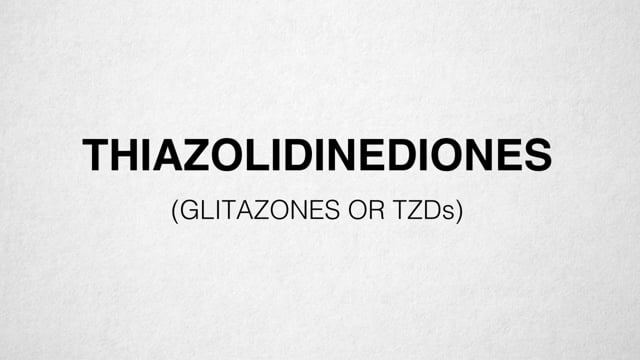TZDs
Glitazones or TZDs are a type of pill taken by mouth to treat type 2 Diabetes.
TZDs work in two ways to help control your blood sugar levels. They lower your body’s resistance to insulin and cut back the amount of sugar released by your liver.
Insulin resistance is common in type 2 diabetes and is one of the causes of high blood sugar levels. Insulin resistance happens when your body does not easily let insulin move sugar out of your bloodstream and into your cells where it is needed for energy. By lowering insulin resistance, TZDs help insulin in your body to work better at lowering your blood sugar levels.
In type 2 diabetes your liver releases more sugar into your bloodstream than it normally should. TZDs cut back the amount of sugar that your liver puts out into your bloodstream. Both of these actions help TZDs control your blood sugar.
There are currently two TZDs available in the United States
- Rosiglitazone or Avandia
- Pioglitazone or Actos
TZDs are pills that are taken one time a day. You can take TZDs with or without food.
If you are taking a TZD in a combination pill with metformin, your daily dose may be divided in half to be taken twice a day with breakfast and with dinner.
TZDs may cause you to retain fluids which can lead to some weight gain.
When taken alone or with metformin, TZDs do not usually cause low blood sugar or hypoglycemia.
You should also know that risk of low blood sugars when you are taking a TZD goes up if they are taken with other diabetes medications such as sulfonylureas, including glipizide, glyburide, glimepiride, or if you are taking insulin shots. When you start a TZD, if you are taking a sulfonylurea or insulin, your doctor might change the dose of these medications to help prevent low blood sugars as the TZD begins to work to help control your blood sugars.
When you start taking a TZD it can take up to 2-3 weeks to see how well it is going to work for you.
TZDs do have side effects that may occur. The most common side effects of TZDs are:
- Fluid retention
- Weight gain
- Headache
- Mild anemia, which is a decrease in your red blood count
The most serious possible side effect from TZDs is heart failure, also known as CHF. Symptoms of heart failure include shortness of breath, feeling tired and swelling of the feet and ankles. If you experience any of these things, you should call your provider immediately.
Uncommon, but important other side effects of TZDs to know about are:
- Macular edema, which is fluid build-up in your eye and can change your vision
- Bone fractures
- Liver damage
Some people should not take TZDs. You should not take TZDs if you have a history of heart failure and/or a history of liver disease.
If you have any questions about TZDs, you can talk to your doctor about whether TZDs are right for you.


